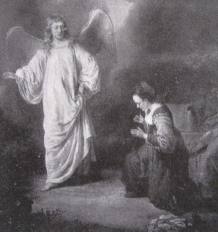Aug 232010
My experiments with maquettes and mirrors have given me a fresh insight into Rembrandt's modus operandi; which give me a true grasp of his strengths and weaknesses. Even sensitive scholars relying on instinct cannot rival this knowledge. The fact that my findings are entirely in accord with the documents of his contemporaries and near contemporaries; must add considerably to their credibility. My findings are completely at odds with today's “experts”. In his introduction to the Dover edition of the “Drawings of Rembrandt” and his School, Prof. Slive sites the near unanimity as reason for giving extra credence to scholarly opinion. I would argue, on the contrary, that it demonstrates the hopelessly hierarchical system of promotion within the discipline of art history: a structure that systematically eliminates any heresy. [My own experience as a rising star that was subverted by the unanimous voice of the Rembrandt “experts” I need not repeat here. Suffice it to say that without the democratizing influence of internet my voice would have been effectively silenced. The other media have not given me space for over 25 years though my discovery was once hailed as “The Rembrandt Revelation” by The Observer. Apparently the “experts” can successfully defend the indefensible by drowning my solid evidence with the sheer volume of their babble. The present volume is a striking example of this phenomenon.] Criticism of The Biblical Subjects I limit myself to the Biblical Subjects because that is where my evidence is grounded. This catalogue breaks with normal precedent by not making it clear just how far it strays from earlier scholarly opinion. It strays very far indeed. Over 20 of the drawings here attributed to pupils were accepted by Otto Benesch in 1954. In not one single case can the student suggested by these authors be shown to have even a hint of Rembrandt's characteristic gifts, nor for that matter, his weaknesses. I will attempt to define these as we look at the examples.Example 1. A drawing of Lot and his family being led out of Sodom by an Angel, was accepted as a Rembrandt by Benesch, B.129 in his 1954 catalogue. It has been re-attributed to one Jan Victors, of whom few people will ever have heard, nor is there any proof that he was ever a student of Rembrandt's. His paintings are undoubtedly Rembrandt inspired in colour and tone but his idea of form is much more classical than Rembrandt's. The two Victors drawings reproduced in the catalogue to back the re-attribution have nothing in common with this, other than the use of brown ink as a medium. They are feeble by any standard. This (B.129) on the other hand is characteristic of Rembrandt in two important respects: Lot himself is typical of Rembrandt when drawing from life – the clasped hands are an oft recurring item – the head is typical, particularly in the modification of the line of the forehead, which turns Lot slightly in our direction so he does not present us with a pure profile.B.129 Lot being led out of Sodom by an angel
His stance is suitably expressive of discomfort, his cloak recognisable from Rembrandt's theatrical wardrobe. But most characteristic of Rembrandt are the accompanying figures behind Lot. They are not observed from life but invented and therefore “ worthless in his (Rembrandt's) eyes”. I know of no other artist but Rembrandt who would be prepared to demonstrate just how worthless he is “without life in front of him”. For me the pose of the leading angel is of a different and superior order, he probably has been sketched from life. The very different quality of these figures make it certain that Benesch was right and the present authors, dangerously misleading.B.129 Lot's face
Example 2. A mother suckling a baby B.359 is one of Rembrandt's most lovely drawings. If anyone can accept that Bol might possibly have drawn the “Hagar and the Angel” the subject matter of my film then of course there is no reason why Bol should not have drawn many of Rembrandt's greatest successes, however, the quality of his real drawingB.359 Mother Suckling a baby
and the pathetic quality of his painted Hagar make this quite impossible. Bol's box of drawings in the Rijksmuseum does, alas, contain many of Rembrandt's most precious pearls.Bol: Hagar and the Angel
Example 3. also now attributed to Bol once B.537, of Christ mistaken for a gardener, is another splendid example of the way Rembrandt can catch, with a few well selected directions of limbs and perfect sense of balance, a most relaxed pose. Vintage Rembrandt, an unerring sense of space.b.537 Jesus mistaken for a gardener
Example 4. of Esau selling his birthright to Jacob for a bowel of potage, B.564 could hardly be more typical of Rembrandt, particularly as the second superfluous bowel suggest that the drawing is loosely based on a mirror image.B.564 Esau sells his birthright
B.121 An actor being crowned. Now attributed to Flinck
Examples 5 & 6 B.121 & B.122 are infinitely closer to Rembrandt's many drawings of actors than to anything known from Flinck or Eeckout to whom they are now re-attributed. This madness must be stopped! I could go on and on but this is probably enough for now.B.122 a Bishop: attributed to Eeckout
